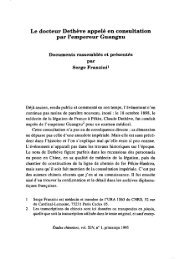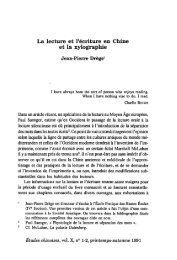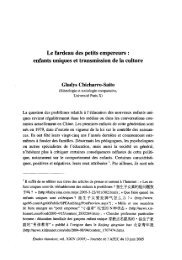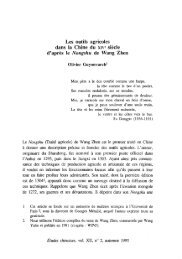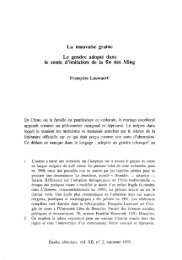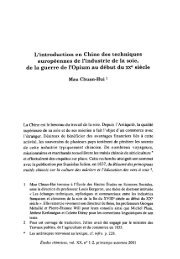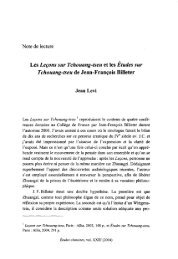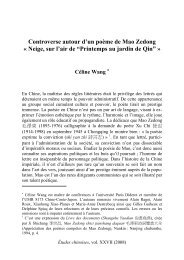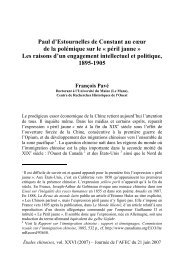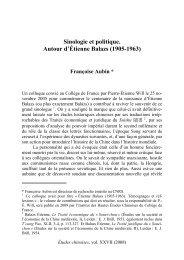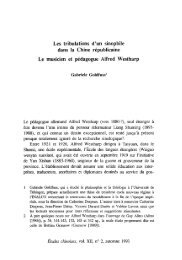You also want an ePaper? Increase the reach of your titles
YUMPU automatically turns print PDFs into web optimized ePapers that Google loves.
Comptes rendus<br />
nasty (1906-1911); to be found in East China (Jiangsu and Zhejiang) and<br />
Southeast China (Jiangxi, Fujian, Guangdong); to involve 1 000 to 5 000<br />
people; and to be concemed more with tax résistance or other forms of<br />
government résistance than anything else. Secret society violence was<br />
limited with about one quarter of ail rural disturbances based on intercommunal<br />
violence.<br />
However, a far more important resuit of Chapter 4's overview is its<br />
messages about research. It not only tackles the issues surroundings the<br />
availability of data, but points out with considérable flair (and without<br />
belabouring the argument explicitly) that statistics are only one tool at the<br />
historian's disposai: in the end a judgement is also required, and that<br />
judgment also requires a wider reading, both from understandings of<br />
China's rural development and peasant life elsewhere. The immediately<br />
following chapters examine différent types of peasant violence identified<br />
in the overview. Thèse include riots against poppy-tax collection and<br />
opium eradication campaigns, and land rents and taxes, as well as food<br />
riots.<br />
An important aspect of Bianco's research is the identification of inter-communal<br />
violence (xiedou) as a spécifie analytical category of peasant<br />
activism, where families, clans, villages, or even sometimes counties<br />
were pitted against each other. As opposed to conflicts between rich and<br />
poor, or between government and governed, thèse were not in any sensé<br />
class-based insurrections. Chapters 9 and 10 look respectively at intercommunal<br />
violence in the pre and post-1949 periods. In Chapter 9 Bianco<br />
argues that inter-communal violence not only continues patterns of conflict<br />
found in the previous centuries, with a higher incidence in Southeast<br />
China than elsewhere, and clashes largely over resources (land, water,<br />
transport) common, but also that there is in many respects the évolution of<br />
cultures of inter-communal violence. Revenge too, as in the past, might<br />
then be a potent cause of inter-communal violence. Chapter 10 extends the<br />
analysis of inter-communal violence into the era of the PRC. While acknowledging<br />
the particular nature of state intervention in social management<br />
under the PRC and the extent to which it necessarily changed the<br />
incidence and processes of inter-communal violence, Bianco also high-<br />
548



